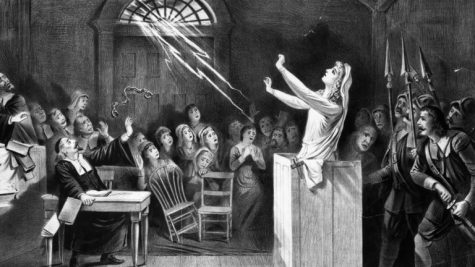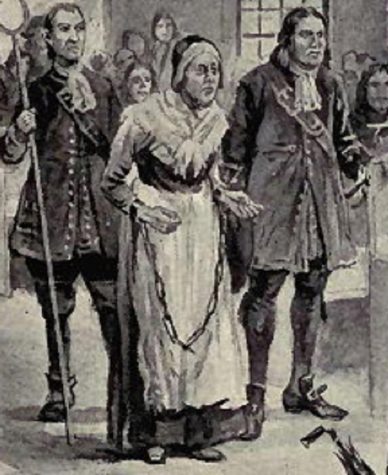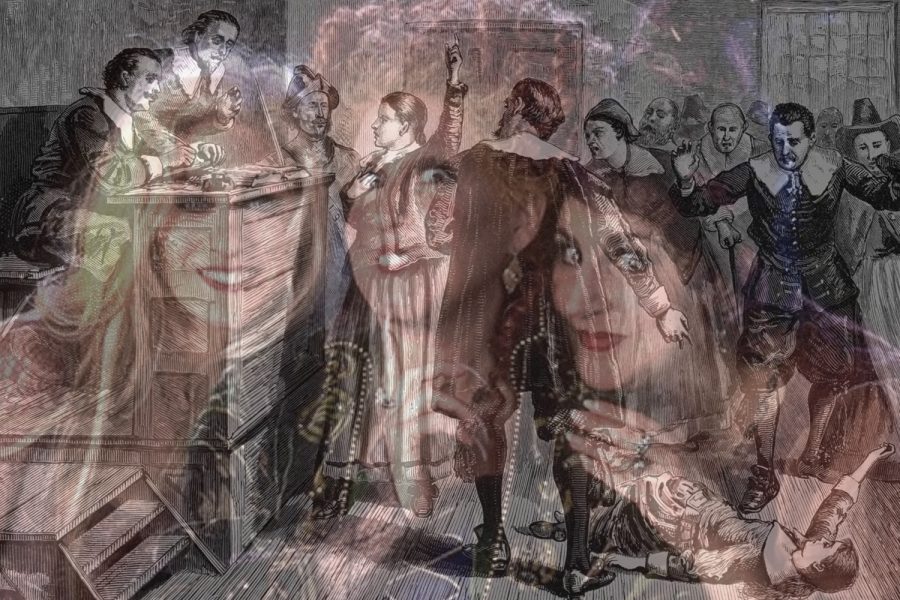The dark history behind the seasonal comedy Hocus Pocus
The real story behind the iconic Sanderson sisters is much more tragic than their comical stories.
Hocus Pocus is good entertainment, but it also draws parallels to one of the darkest chapters in American history.
‘Tis the time of the year for trick or treating and ghost stories and for Mary Sanderson to say her iconic line, “I smell children!”
27 years later and the beloved movie Hocus Pocus is still watched every Halloween season. The Sanderson sisters Winne, Mary, and Sarah continue to produce endless laughter with their comical and ridiculous personalities.
While the three sisters were portrayed as truly magical individuals with a craving for children’s souls to keep themselves young, their characters were based on real women, who were innocent people, murdered for being supposed witches.
The Salem Witch Trials began in the spring of 1692. When a group of girls accused numerous women of possessing them by the devil through witchcraft, the colony of Massachusetts spiraled into chaos and panic. By June, Bridget Bishop, the first witch accused, was hanged.
In colonial times, religion was the main focus of everyday life. The Salem Witch Trials would not have occurred were it not for the fact that the Puritan colonists believed that the devil was being enacted on others.

Paranoia served as a catalyst to the accusations of witchcraft. A new term was even developed to describe the people who were experiencing symptoms of witchcraft — they were “bewitched.” Several centuries later, a 1976 article in American Scientist argued that the behavior of the alleged witches in Salem mirrored the symptoms of ingesting a fungus called ergot, found in commonly consumed foods of the time. The fungus causes delusions, vomiting, and muscle spasms — all common signs for the Puritans of being “bewitched.”
The ultimate punishment served by the Sanderson sisters in Hocus Pocus was the penalty of hanging. While the punishment was common in the pre-colonial era — in fact, 19 Salem men and women perished from this form of execution during the trials — hanging was not the only way the convicted witches were brought to their untimely end.
Giles Corey was stoned to death after refusing to plea innocent or guilty in court. Other victims — Lydia Dustin, Ann Foster, Sarah Osborne, and Robert Toothaker — did not even get a chance at innocence due to their inhumane treatment in the witch jail, which ultimately led to their deaths. However, none of the Salem Witch Trial victims were burned at the stake, as common lore suggests.
Along with the misconception of burning at the stake, the notion that only women were persecuted during the Salem Witch Trials is false. Numerous men were wrongfully accused — but not because they were believed to be witches. Instead, they spoke out against the unjust accusations made against the women.
John Proctor’s pregnant wife was actively questioned in court about her supposed witchcraft when he spoke out against the court in her favor. He soon would be added to the list of witches, along with the minister George Burroughs, who owed money to a family. The family heard of the trials and accused Burroughs of witchcraft simply because they were unhappy with him. Both men were killed.

The hysteria reached such insane levels that two dogs were even accused of witchcraft. The dogs were executed as a result.
The trials lasted until early 1693, soon after Cotton Mather and his father urged the Salem Witch Trials to require just as much evidence as normal trials. Governor May Phips decided to drop the remaining charges on any individuals being charged for witchcraft. Four years later, the colony of Massachusetts’ General Court created a day of fasting for those lives damaged during the trials. In 1711, the General Court provided financial restitution to the families of the perished. Yet, the damage created during that dreadful year was far too great to simply be forgotten about with apologies.
The historic story of the Salem Witch Trials has never fallen out of the historical spotlight. Arthur Miller’s play The Crucible, commonly read by American high school students, depicts the trials. Though the tragic piece of history occurred over 328 years ago, its legacy carries on as a reminder of how hysteria leads to insane misjudgment that ultimately results in horrible outcomes.
The classic Halloween movie Hocus Pocus will always be played each year to celebrate its perfectly hilarious concepts and iconic nature. But when the history behind the film is better understood, it can be appreciated that much more.

Anna Parsons is a current senior at NASH. This is her second year writing for The Uproar, but her third year writing for a school newspaper. As a sophomore, Anna wrote for the NAEye. She enjoys expressing herself through her writing. She also enjoys acting in local theatre productions, as well as the NA musicals and plays.


Sam • Mar 3, 2025 at 5:23 pm
This is extremely disturbing yet interesting but this just shows how far someone will go to prove a point
Allison • Oct 22, 2022 at 5:26 am
Just watched it for the first time and it left me feeling uneasy. Is there any other history or innocent people killed that we use for comedic effect? Just this one that is mostly about women. Then we re-paint them as horrible women in this comedy again years later.
Judah • Mar 23, 2022 at 9:58 pm
Well done!!
Your compassionate and factual wider view than what is more common, speaks to your excellent intent to “set the story straight”. Thank you!